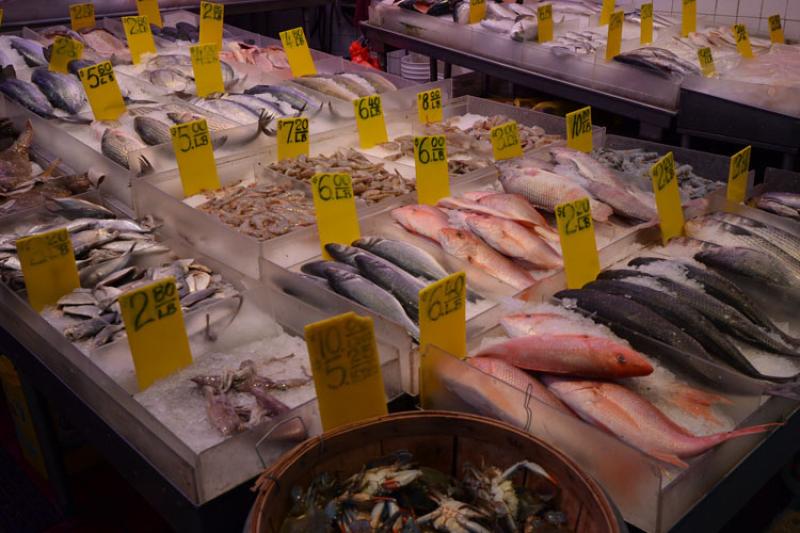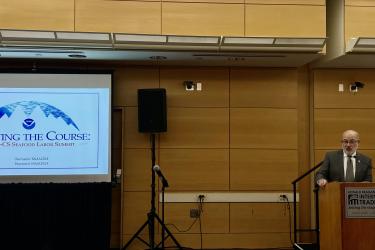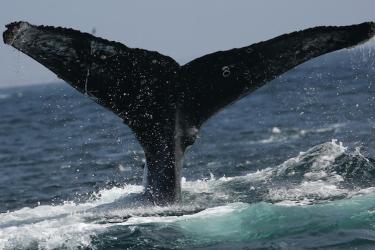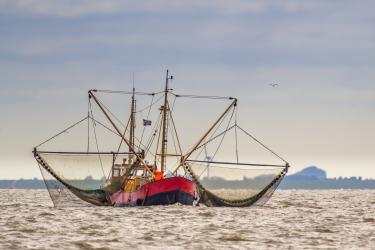The United States is one of the largest markets for seafood in the world. Every American eats almost 16 pounds of seafood a year, spending about $96 billion annually on seafood.
As a result, we have a major impact on the sustainability of the world’s fisheries and in global seafood trade. As one of the largest consumers and importers of seafood in the world, we have a responsibility to ensure imported fish are caught legally. We also must protect our domestic fishermen from unfair competition and ensure consumer confidence in the seafood supply.
To do this, the United States engages with other countries bilaterally and through various multilateral international fisheries organizations. We promote sound management and conservation of global fisheries resources in a manner consistent with U.S. domestic fisheries policy.
NOAA works with other U.S. government agencies, foreign governments and entities, international organizations, non-governmental organizations, and the private sector. This is crucial to effectively addressing the seafood industry’s most pervasive issues like combating illegal, unreported and unregulated (IUU) fishing, and limiting marine mammal bycatch.
Combating Challenges in our World’s Fisheries
In 2019, NOAA Fisheries launched the first-ever international reporting system on marine mammal management for foreign fisheries.
This web-based portal allows foreign nations to submit information electronically to NOAA on their marine mammal management measures. It facilitates compliance with the U.S. Marine Mammal Protection Act Import Provisions, which aim to reduce marine mammal bycatch associated with international commercial fishing operations. They require nations exporting fish and fish products to the United States to be held to the same standards as U.S. commercial fishing operations.
We’ve also continued to lead the global fight to combat IUU fishing. FAO estimates that IUU fishing activities are responsible for the loss of nearly 11–26 million tons of fish each year. It also drains an estimated $10–23 billion from the global economy, in addition to devastating fish populations. IUU fishing activities damage our economy, hurt fishermen who play by the rules, threaten global food security, and rob future generations of precious ocean resources.
NOAA Fisheries' approach to combating IUU fishing is broad, persistent, and multi-pronged. We recently released our 2019 Improving International Fisheries Management Biennial Report to Congress. The report identified three nations with vessels reported to be engaged in IUU fishing activities, and announced the certification determinations of nations previously identified for these activities from the 2017 report.
An early supporter of the Port State Measures Agreement, we continue to advocate for full implementation of the Agreement by all nations. The PSMA discourages illicit vessels from operating while simultaneously blocking IUU fish and fish products from reaching our markets.
Also, it is now mandatory for foreign shrimp products to be accompanied by harvest and landing data. Importers must maintain chain of custody records for shrimp and abalone imports entering the United States. We included shrimp—the largest U.S. seafood import—and abalone in the U.S. Seafood Import Monitoring Program. This nearly doubles the volume and value of imported fish and fish products subject to its requirements, further leveling the playing field for U.S. fishermen.
SIMP is a risk-based traceability program. It requires key data on thirteen imported fish and fish products identified as particularly vulnerable to IUU fishing and seafood fraud. This data is required from the point of harvest to the point of entry into U.S. commerce.

U.S. Seafood Trade
We often hear about how much seafood the United States imports, a vast amount at about 5.9 billion pounds of edible fishery products each year. However, the United States also exports about 3.2 billion pounds of edible seafood each year. This is an increase of about 269 million tons, or $345 million, from 2016 to 2017.
The Office of International Affairs and Seafood Inspection administers NOAA’s successful Seafood Inspection Program. The program provides voluntary seafood inspection services to more than 1,300 processors and importers to meet regulations and accepted seafood production best practices governing fishery products. The program is the U.S. Government Competent Authority to issue health certificates for exporting fish and fishery products. It annually processes nearly 150,000 export health certificates for its participants to over 130 countries globally.
The United States leads the way in science-based fisheries management. We use innovative strategies to achieve and maintain sustainable fisheries and to preserve and rebuild protected species. Simply put, a key export to our global partners is the standards we’ve implemented. They make our fisheries a global model of success, and ensure the seafood we export is safe, wholesome, and sustainable.
We invite you to learn more about NOAA Fisheries’ work in the international fisheries arena.



